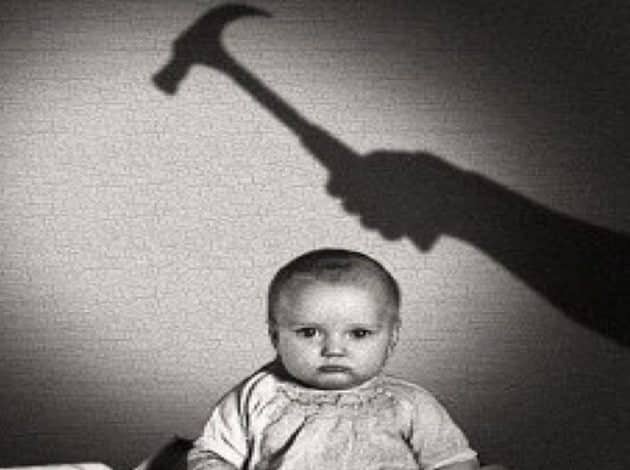Not Only Did Little Albert Learned to Fear White Rats
Whenever Albert touched the rat Watson would make a loud noise. Watson and Raynor presented Little Albert with a white rat and he showed no fear.

The Search For Psychology S Lost Boy
Stimuli he was presented with a white rat a rabbit a monkey a dog masks with and without hair and white cotton wool.

. Then every time the baby touched the animals scientists struck a metal bar behind him creating a startlingly loud. In Watsons little Albert experiment Little Albert was conditioned to fear a white rat. The infant was exposed briefly and for the first time to a white rat a rabbit a dog a monkey masks with and without hair cotton wool burning newspapers and other stimuli.
What did Watson believe is the best explanation of human emotions and. Watson then presented the rat with a loud bang that startled Little Albert and made him cry. The next step in the Little Albert.
In it a 9-month-old at first unfazed by the presence. This implied that he did not have any reason to fear or avoid the rat before the experiment began. The lad was unafraid of everything and was in fact really taken with the rat.
In the study Watson and graduate student Rosalie Rayner exposed the 9-month-old tot whom they dubbed Albert B to a white rat and other furry objects which the baby enjoyed playing. You might not have heard that a scarier experiment arguably one of psychologys most unethical was once performed on a baby. Up to 24 cash back The Little Albert Experiment was created by John Broadus Watson and was conducted in 1920.
After the continuous association of the white rat and loud noise Little Albert. Naturally the child began to cry after hearing the loud noise. What was the unconditioned stimulus.
Little Albert Experiment Summary. The next time Albert was exposed the rat Watson made a loud noise by hitting a metal pipe with a hammer. This behavior was the result of.
Albert did not show interest or fear in the white rat. Stimulus generalization is peoples tendency to give similar responses after have been previously. Not only did Little Albert learn to fear white rats he also cried when presented with a Santa Claus mask or a seal-fur coat.
Watson picked an infant. This behavior was the result of. This behavior was the result of.
In the beginning of the experiment when. Albert was a 9-month-old baby who had not previously demonstrated any fear of rats. This was tested by presenting Albert with a white family dog a fur coat even a Santa Claus mask.
PsychologyQA LibraryLittle Albert learned to fear a white rat after repeatedly experiencing a loud noise. Albert an infant was exposed to a white rat which he showed no visible fear towards. When Little Albert was 9 months old Watson and Rayner exposed him to a series of stimuli including a white rat a rabbit a monkey masks and burning newspapers and observed the boys reactions.
Up to 24 cash back Little Albert. Up to 24 cash back As the experiment began the researchers presented Albert with the white rat and the frightening noise at the same time. Watson then began accompanying the presentation of the rat with a loud noise.
The boy initially showed no fear of any of the objects he was shown. Before the experiment Albert was given a battery of baseline emotional tests. Not only did Little Albert learn to fear white rats he also cried when presented with a Santa Claus mask or a seal-fur coat.
This behavior was the result of. At first Albert was interested in the rat and. In the beginning stages of the Little Albert experiment Watson and his graduate student Rosalie Rayner introduced the infant to a monkey a rabbit a white rat and a variety of masks.
Watson introduced Little Albert to a white rat and allowed him to play with it. Seemed to show no fear of the rat initially. The Little Albert Experiment demonstrated that classical.
This experiment was conducted by John Watson he wanted to test the idea of whether fear was innate or could be conditioned. Albert showed the same fear that he did originally towards the rat to these objects. Alberts reactions to these stimuli were closely observed.
Not only did Little Albert learn to fear white rats he also cried when presented with a Santa Claus mask or a seal-fur coat. Watson wanted to prove that the majority of human behaviour is. The rat the fear O Watson O a banging noise a scary mask.
Albert showed no fear of. At a Johns Hopkins campus hospital in 1920 behavioral psychologists conducted an experiment with a nine-month-old boy known as Little Albert who was given a white rat to play with.
The Little Albert Experiment The Perverse 1920 Study That Made A Baby Afraid Of Santa Claus Bunnies Open Culture

Erasing Fear Memories Operant Conditioning Psychology Experiments Ap Psychology


No comments for "Not Only Did Little Albert Learned to Fear White Rats"
Post a Comment